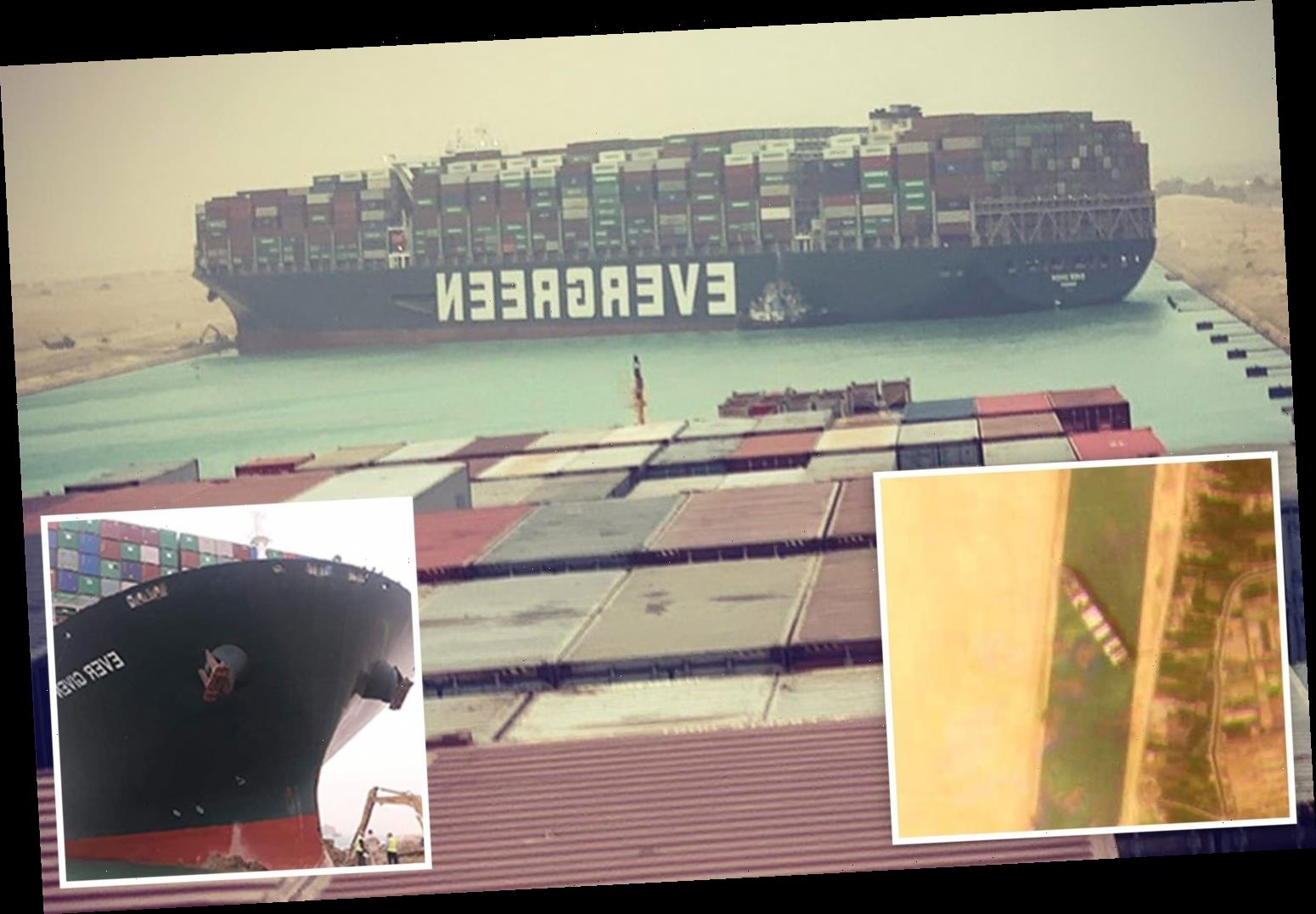OIL prices have surged about six per cent today after a 'mega ship' the size of the Empire State Building ran aground in the Suez Canal.
The 200,000 ton Ever Given is lying sideways in the canal after its owners said it was grounded by a "gust of wind".
The blockage caused a pileup of at least 100 ships attempting to enter the narrow channel, which divides Africa from the Sinai Peninsula in Northern Egypt.
Around one million barrels of oil pass through the canal every day along with 30 per cent of global container ships.
And millions of barrels are already stuck in boats waiting to enter the canal sparking the rise in global oil prices.
Further impact on the oil and gas markets will depend on how long it takes to move the vessel, reports says.
The mega-ship, which is 1300ft long and 194ft-wide, has been partially re-floated – however authorities fear it could take DAYS to remove it.
Marine officials said they hoped traffic along the canal could resume but the giant vessel would have to be towed to another position.
The Ever Given became stranded when it lost its ability to steer on Tuesday morning after being battered by strong winds and a dust storm, the Suez Canal Authority (SCA) said.
Bernhard Schulte Shipmanagement (BSM), which handles the boat's crew, has launched a probe into the incident and confirmed that all those on board are safe and not injured.
Expert Sal Mercogliano said the effect on world trade, including vaccine supply, could be "catastrophic".
He told the BBC's Today programme: “Because of Covid, you know how badly things have slowed down with moving goods, and now all of a sudden you add this and you’re going to have a delay getting goods to markets.
“We’re talking about vaccines, manufacturing goods, food, everything. It’s potential catastrophic delays.
“Ten per cent of the world’s trade goes through the Suez Canal and you average about 50 vessels a day and we're in the second day of not being able to move any vessels.
“Shipping companies are going to have to make a decision fairly soon whether or not to route the vessels around Africa, which adds and additional 12-14 days."
Dr Mercogliano, an ex-merchant mariner and professor of history, said the situation of a ship blocking the entire canal has never been faced before.
What is the Suez Canal?
The Suez Canal is the quickest sea route between Asia and Europe and is one of the world’s most heavily used shipping lanes.
On average 50 vessels per day pass along the canal, although at times the number can be much higher.
The canal is 120 miles long, 672ft wide and 78ft deep meaning it can handle the world’s biggest ships, which take around 11 hours to pass through.
Ships have been grounded in the canal before and in 2017 a Japanese ship became stuck but was re-floated within hours.
The first canal was dug under the reign of Senausret III, Pharaoh of Egypt, who reigned from 1887-1849BC.
A new artificial waterway was planned by French engineer Ferdinand de Lesseps, which took 10 years to complete and opened in November 1869.Egypt nationalised the canal in 1956, prompting an invasion by shareholders Britain and France along with Israel.
The Suez Crisis ended only after Egypt sank 40 ships in the canal and the United States, Soviet Union and United Nations intervened, forcing Britain, France and Israel to withdraw.
The state-owned Suez Canal Authority was established in July 1956 and runs the waterway.
In 2015 Egypt extended the Suez Canal providing ships with a 22 mile channel parallel channel, allowing more vessels to use it
He said: “There have been groundings on the Suez Canal before but never one of a ship this size or so dramatic – literally shutting the whole canal down by crossing the entire width of the canal."
The ship was on its way from mainland China to Rotterdam in the Netherlands when it became stuck.
Ever Given's bow was touching the canal's eastern wall, while its stern looked lodged against its western wall, according to satellite data from MarineTraffic.com.
Several tug boats surrounded the ship, likely attempting to push it the right way, the data shows.
Opened in 1869, the Suez Canal provides a vital link for oil, gas and cargo being shipped from East to West.
Some 19,000 boats passed through the canal last year, according to the Suez Canal Authority.
Source: Read Full Article





